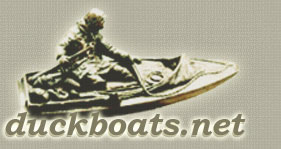Tim,
Have a bunch of heads going in the shop right now (Whistling ducks). Here are some photos that show stages in the carving process that may give you a better idea of how things might progress.
After the heads are bandsawed ( If you don't have a bandsaw, I'd suggest visiting a local high school shop [do high schools actually teach shop classes anymore?] or a woodworking store that has a teaching lab set up - in a pinch heads are also thin enough to cut with a coping saw ) and reference lines are sketched on, the first step with the knife for me is to establish the outside dimensions where the crown and bill intersect. Then I will move on to rough shaping the bill followed by sanding it smooth. After the head is carved, I'll go back and add detail to the bill.
Note what Steve told you earlier about drilling a reference hole to locate your eye placement. Mine are not as large as he said he uses (I'll widen them later), but the purpose is the same - to create a balanced reference point as you continue removing wood. Note also the reference lines & marks that establish the eye channel and the widest point on the head. You can also see that I've also established a center line around the entire bandsawed head. I have a set of study bills I've collected over the years as well as cardboard templates taken from these study bills. They can be had at a reasonable price. Years ago I'd cut off the bills of birds I took while hunting and keep them in the freezer. Nowdays cast resin bills can be had. Much better to work with + your wife will not get as PO'd at you.;-) I'll use them to accurately lay out the shape of the bill before I bandsaw my top view, cut in the crown, and start to shape the bill. In this photo, most of the marks I had drawn on to define the rear of the bill where it joins the head have been carved away; however, I will re-draw them when rough shaping and sanding is complete, and I'm ready to add details
View attachment a.jpg
Then it becomes a matter of removing wood from the eye channel and rounding toward the center line. Not quite as simple as that, but it's probably the best way to describe the process. A better feel for shape comes as you layer reference and carve more and more. I like to initially remove wood with gouges, and I've settled on a pair that have a #8 sweep simply because they work for me. The larger one probably sees the most use once the eye channel has been started, as I have developed a feel for how to use its edges as well as the meat of its curvature to remove wood efficiently. A word of caution here : you will find a place on the head somewhere near the mark for the wide point (It will vary slightly)where your knife or gouge must cut to or away from the bill to avoid tearing the grain of the wood - but you've probably already found that out ;-)
You can see that I have removed wood from below what you were referring to as the "cheek" area, but not very much. Note that there is still plenty of "room" left to the mark keeping tabs on the wide point of the head. How accurately the lines approaching that mark from
all directions taper to it (...and they all taper to it differently!) will go a long way in determining how much like a duck your finished head carving will look from ALL angles.
View attachment b (300 x 200).jpg View attachment c (300 x 204).jpg View attachment d (300 x 200).jpg
Then I'll clean up with a detail knife and a padded sander.
Here is a group (of mostly whistler) heads when the bills have been detailed. Note that the reference holes for the eyes have now been reamed out to allow for the proper size eyes to be set. But the big thing I want you to see in this picture is the taper beneath the wide point on the head. It is not deep and rounded but more of a straight drop with a very slight taper if any. I'll go back to these after a while and look them over again. Invariably, I find something that strikes me as needing a bit of re-shaping (tht head on the left looks a bit too "cheeky" on the one side) and get the detail knife out again. Note also that the eye-channel is not a uniform depth from front to back. As Joe Wooster used to admonish: "Leave some room for brains."
View attachment e.jpg
Luck,












